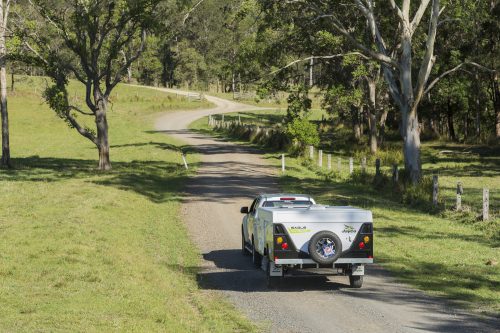VIN Plate
A vehicle identification number, is a unique code including a serial number, used by the automotive industry to identify individual vehicles including towed. VIN plates generally include other details such as tyre Pressure, tyre Size and model details.
There are various locations where the VIN plate can be located and depends on the manufacturer. The most common places are:
- Stamped on the corner of every window
- Placed down beside the entrance door to the caravan.
- If you have trouble locating the VIN, check the corners and the lower sections of the van.
Definitions of what may be stamped on the trailer plate or VIN plate of your caravan or trailer are as follows:
ATM (Aggregate Trailer Mass)
The total weight of a caravan or trailer on all wheels, plus the tow ball mass and whatever you add as personal payload. (eg. water, gas, luggage). The ATM is specified by the manufacturer and must not be exceeded.
GCM (Gross Combination Mass)
GCM is the rating provided by the manufacturer of the tow vehicle. The maximum laden mass of a motor vehicle plus the maximum laden weight of an attached trailer is not permitted to exceed the GCM rating.
GTM (Gross Trailer Mass)
The total weight of a caravan or trailer on all wheels, plus your personal payload, including water, gas and any accessories you fit. This does not include the mass supported by the tow ball. This figure must not exceed the rating for the axle group (wheels, tyres, suspension and axle) specified by the chassis manufacturer.
GVM (Gross Vehicle Mass)
The GVM is the maximum allowable total mass of a fully loaded motor vehicle, consisting of the tare mass (mass of the vehicle) plus the load (including passengers).
Payload or Load-carrying Capacity
The total permitted load that may be legally carried in the van or trailer, this includes all personal items added to your trailer or caravan such as clothes, food, crockery, tools, water, gas and any accessory you install such as TV, microwave, push bikes, spare wheel etc). Subtract the Tare from the ATM and you have the load-carrying capacity however payload is specified by the manufacturer.
Tare Mass
The total weight of a caravan or trailer on all wheels, plus ball weight. The tare does not include your personal payload nor water and gas. This is what it weighs when it leaves the production line. Like the ATM, but unlike the GTM, it combines the mass that rests on the tyres and the mass that rests on the tow ball.
TBM (Tow Ball Mass)
The maximum permitted weight to be placed on the tow ball by the coupling. It is the difference in weight between the caravan/trailer on the tow vehicle and off. The ideal for this is considered around 10% of the weight of a fully-laden caravan or camper trailer. Care should be taken to check with some imported caravans as they may be considerably less than 10%. Too much ball weight can affect the tow vehicle’s stability, steering and braking, whilst too little ball weight can cause the caravan or trailer to become unstable and sway.
One way to calculate the ball load/tongue weight is the difference between the ATM and the GTM.
Warning:
You must never exceed the GTM (Gross Trailer Mass). To do so could overload the suspension, chassis or frame and thereby cause an accident by component failure. If in doubt about the weight of your caravan or trailer you should weigh it when fully loaded on the road including full water tank(s) and gas cylinder(s). This can be done at a Public Weighbridge.
How to calculate what personal load you can carry in your trailer or caravan
To calculate the maximum load you can safety carry in your trailer or caravan, take the TARE (as stamped on the trailer plate), from the aggregate trailer mass. ATM (as stamped on the trailer plate). The ATM minus the TARE equals the maximum load your trailer or caravan can carry.




